Planting peonies in autumn or is it better to wait until spring?
Every amateur florist knows that planting peonies in the spring is undesirable. These perennial flowers grow better and bloom faster after planting in the fall.
Lush bushes of peonies create a unique beauty in the country and spread a sweet pleasant aroma through it. To decorate a flower bed, you can choose a variety of varieties and colors. Red, pale pink and white peonies with double or semi-double buds are often found. Achieving a gorgeous bloom is not difficult. You need to choose the right place for planting and carefully look after the peonies.
Why autumn planting is better
In the climatic conditions of our country, peonies should be planted in late August or early September. During this period, the flower is at rest. Green shoots stop growing, and the buds, from which new growth will begin to develop in spring, are fully formed. Now is the best time to dig up and divide the adult plant into several bushes.
During the winter, peonies take root, at the end of March they release shoots arrows, grow very quickly and begin to bloom. That is why planting peonies in the fall is much better.
Despite this, peony seedlings are usually sold in stores in the spring. What if you purchased your favorite flower variety at a bad time?
- Place it in a wide pot, cover it with low acid soil, and place it in a cool, dark place.
- Moisten the soil constantly, but do not overfill so that the roots do not start to rot.
- When the first buds hatch in the pot, place it on the windowsill and take care of it like any houseplant.
- After the frost stops, the flower can be planted in open ground in a permanent place.
The roots and buds of peonies wake up under a layer of snow in early spring. As soon as it melts, the shoots begin to stretch upward, and a lush green bush appears on the flower bed. If you plant the purchased plant immediately in the ground, its development will begin later, the flower will look stunted and may dry out.
Choosing a place in the garden
Take care of choosing a good location for the peony. Do not forget that this is a perennial plant that will delight you for many years if you provide it with comfortable conditions. Try not to stagnate water in the garden in spring or autumn. The flower tolerates frost well, is patient with drought, but constantly wet roots begin to deteriorate and rot.
The flower bed must be on the sunny side. This is necessary for a lush flowering. In shaded areas, you can only enjoy green shoots. Buds in such conditions are rarely tied and are small.
You need to prepare the garden a few weeks before planting flowers. It is best if it is loamy soil with a neutral level of acidity. But, in principle, a peony can grow in any land with proper care.
Dig holes for each bush about 50-70 cm deep and wide. The distance between them should be at least 70 cm. Place 25 cm of broken brick or other drainage on the bottom.
Be sure to add top dressing on top. For her, it is better to use the following components:
- 100 g of humus;
- 100 g of lime;
- 300 g of wood ash;
- 100 g of potassium sulfate;
- 200 g superphosphate.
Stir the ingredients and fertilize the planting hole. Supplement it with soil from the garden and wait a couple of weeks until the soil subsides and a hole appears at the planting site. Take a peony and dig it into the hole. Gently compact the soil, moisten well and sprinkle with a thin layer of compost.
Advice
It is very important to make sure that the lower flower buds are 4 cm above ground level. If you deepen them into the soil, the peony will not be able to bloom and develop correctly. This must be monitored constantly. Sometimes it happens that the rhizome gradually rises up and is almost on the surface. This is also harmful. The flower must be spud up to the recommended level.
Peony care
Young peonies need regular watering. They love moisture, but stagnant water must be avoided. Water them 2 times a week in spring and early summer, when a lush crown of bushes is forming. In August, too, frequent watering will not be superfluous. Then the peony will bloom better next year.
Make sure that weeds do not appear on the flower bed. They take nutrients from the peonies. Weed the garden bed thoroughly. Systematic loosening has a beneficial effect on flower growth. When working the soil near the rhizome, be careful not to damage the roots.
Advice
When the buds of the peonies bloom and you want to make a bouquet out of them, do not cut the stems at the root. Be sure to leave a part of the lower shoot with several leaves on the bush.
Before freezing, do not forget to trim the drooping bushes, leaving only a couple of centimeters from the ground. Cover the peonies with sawdust for the first few years. Adult plants are not afraid of frost, so they do not need to be wrapped.
If you start planting peonies in the fall, they may bloom next spring. Experienced gardeners are advised to carefully cut the buds. The plant must spend all its energy on rooting and development. After planting in spring, the bushes usually do not bloom for several years.
Feeding young flowers
Some summer residents believe that if the peony is planted correctly, it does not need to be fed for 3 years. Others recommend doing this without fail. Many have noticed that peonies develop well in loamy fertile soils without additional feeding. Therefore, fertilize the soil under young flowers when it is poor in nutrients.
In the first year, it is better to use natural fertilizer. Prepare a mullein solution and water the wells under the peonies with it once a month.
Foliar feeding is useful for young plants. Dilute 1 g of boric acid in 1 liter of water and moisten the shoots with liquid. The first time this must be done after the appearance of the first leaves, and then 2 more times during the summer period.
How to fertilize adult peonies
In early spring, take 3 g of potassium permanganate, stir it in 10 liters of water and pour the ground under the peonies. The solution should be enough for 2 bushes.
When the plant grows, you need to make a second feeding. It can be made nitrophobic. You will need to dilute 40 g of fertilizer in 10 liters of water and pour 500 ml of liquid into each well.
Instead of nitrophoska, such a solution is often used:
- the mullein is diluted in water in a ratio of 1:10;
- add there 40 g of superphosphate and 20 g of potassium sulfate;
- mix thoroughly and add a liter jar of liquid under each bush.
When the peonies have bloomed, wait two weeks and feed the bushes with a special mixture. Collect 10 liters of water, add 5 g of potassium salt and 10 g of superphosphate to it.
You can also use complex fertilizers, which are sold in any store. "Kemira-wagon" and "Kemira-kombi" have proven themselves well. They must be entered according to the instructions. They provide flowers with all the essential minerals.
In late autumn, mix the topsoil in the hole with wood ash and mulch the soil with sawdust.
Diseases of peonies
Sometimes peonies are affected by gray mold. Initially, a white bloom appears on the shoots. It darkens over time. The branches themselves begin to break off, and the leaves fall off. To prevent the disease in early spring, you need to spray the buds and soil. Treat with 1% Bordeaux liquid 2 times at intervals of 12 days.
If gray rot still attacked the peonies, spray them with a 0.7% solution of copper oxychloride, and cut off the diseased shoots and burn them.
When rust appears on the bush - a fungal disease - spots form on the leaves of the flowers, the leaves curl and fall off. You need to deal with it by timely removal of spoiled greens and spraying with Bordeaux liquid.
How best to propagate flowers
The easiest way to plant peonies is after dividing their rhizomes. To do this, a large bush is dug out in early autumn, the root is divided into equal parts so that each has at least 3 dormant buds. The roots themselves are shortened by a third, placed in a planting pit and covered with earth.
Some growers manage to propagate peonies by layers or seeds. It is difficult and not everyone succeeds. Therefore, it is better to purchase your favorite variety in the store or ask your friends to share the rhizome with you when transplanting peonies.
If you want large buds, leave only one flower on the stem, carefully cutting off the side ovary. It is advisable to tie up large bushes. To do this, thin pegs are driven in around the plant, a thread is pulled along them at a distance of 50 cm from the ground. The method helps to avoid injury to branches by the wind and supports shoots with large flowers well.
Peonies are delicate plants that love care and attention. In return, they will delight you with lush flowering and will decorate the garden for a long time.
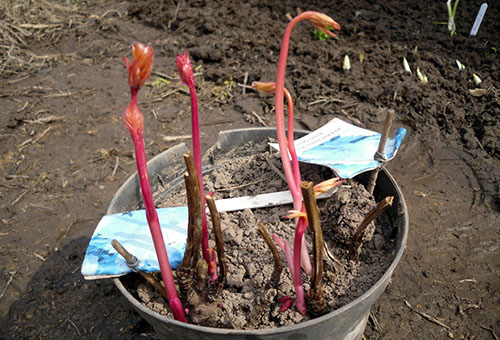
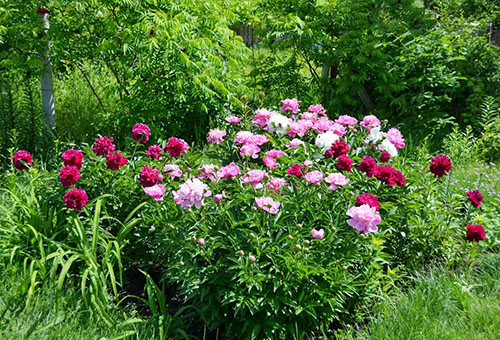
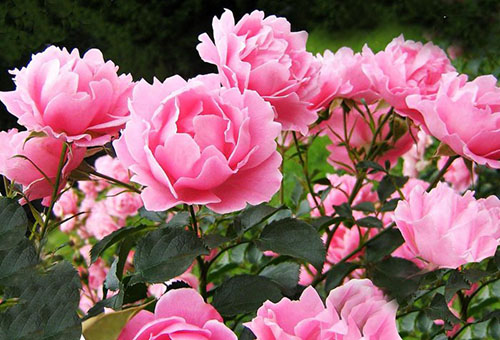
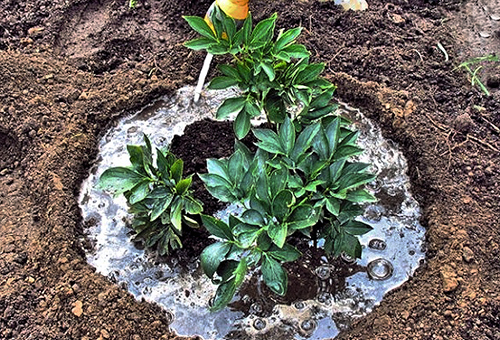
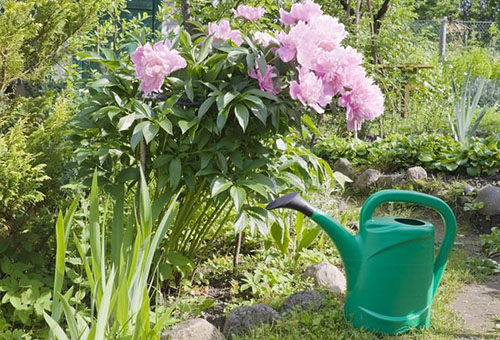
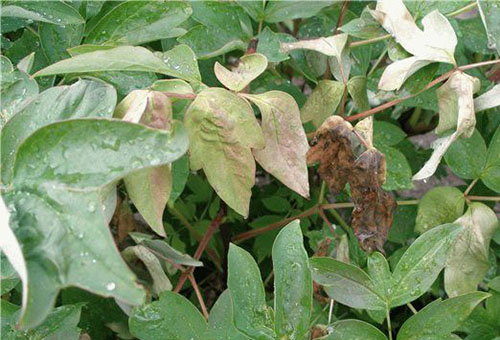
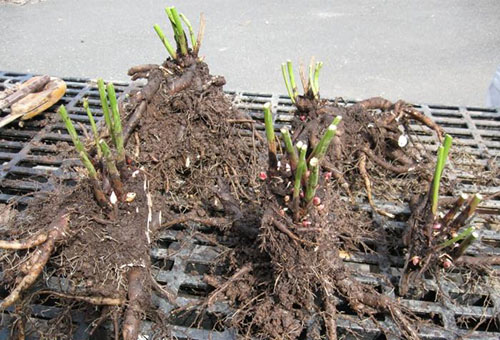

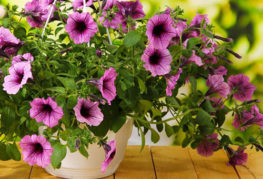
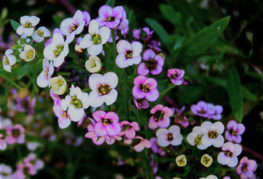



and will be published shortly.